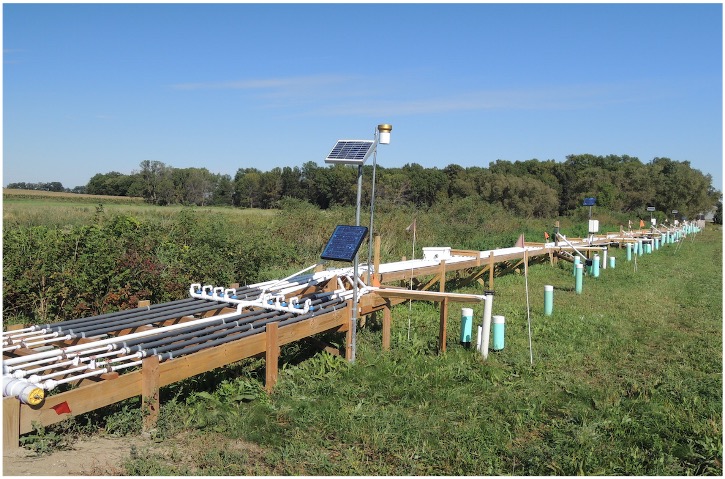Nitrogen (N) pollution is a globally important environmental problem influencing human and environmental health, ozone layer destruction, and global warming. One of the major sources of N pollution is agricultural activities, such as manure and fertilizer application to fields. To control and mitigate N pollution, we need to clarify the mechanisms of the N cycle in the environment.
Microorganisms play key roles in the N cycle. For example, a group of microbes called nitrifiers can convert ammonium (NH4+) to nitrite (NO2-) and then nitrate (NO3-). Nitrification is the major cause of N loss (e.g., nitrate leaching) from agricultural fields because NO2- and NO3- are not well-retained in soils. Groundwater contamination with NO2- and NO3- is a priority health concern because groundwater is frequently used for drinking, and the uptake of NO2-/NO3- can cause severe human diseases (e.g., blue baby syndrome). Nitrate leaching can also cause eutrophication and harm aquatic ecosystems in rivers, lakes, and oceans. N leaching from the upper Midwest states, including Minnesota, is considered a major cause of the dead zone in the Gulf of Mexico.
Denitrification can remove NO2- and NO3- from soil and water environments. However, denitrification usually requires organic substrates and oxygen-free (anoxic) conditions to proceed, conditions that do not frequently occur in drained agricultural fields. In addition, N2O, a potent greenhouse gas and a major contributor to ozone layer destruction, can be produced via nitrification and denitrification. To mitigate these globally important environmental problems, we need to identify when, where, and under what conditions these N cycle processes actively occur, and which microbes are responsible for these reactions.
My lab uses various approaches such as stable-isotope analysis, high-throughput sequencing, and genomics to advance the science of these critical issues. We are also working to develop bioreactors to remove NO2-/NO3- from agricultural runoff water. By using these bioreactors, we aim to mitigate N pollution at low cost and low-maintenance requirements, thereby greatly contributing to ecosystem stabilization and public health.

Woodchip bioreactors installed in agricultural fields
Related publications:
- Feyereisen GW, Wang H, Wang P, Anderson EL, Jang J, Ghane E, Coulter JA, Rosen CJ, Sadowsky MJ, Ishii S. 2023. Carbon supplementation and bioaugmentation to improve denitrifying woodchip bioreactor performance under cold conditions. Ecol. Eng. 191, 106920 (Article)
- Aldossari N, Ishii S. 2021. Fungal denitrification revisited–recent advancements and future opportunities. Soil Biol. Biochem. 157, 108250. (Article)
- Anderson EL, Jang J, Venterea RT, Feyereisen GW, Ishii S. 2020. Isolation and characterization of denitrifiers from woodchip bioreactors for bioaugmentation application. J. Appl. Microbiol. 129, 590-600. (Article)
- Jang J, Anderson EL, Venterea RT, Sadowsky MJ, Rosen CJ, Feyereisen GW, Ishii S. 2019. Denitrifying bacteria active in woodchip bioreactors at low-temperature conditions. Front. Microbiol. 10, 635. (Article)
Resources:
- MnDRIVE field-scale bioreactor for the bioremediation of agricultural runoff video link
- "Boosting Bioreactor Technology to Limit Farm Runoff" (article featuring our research)